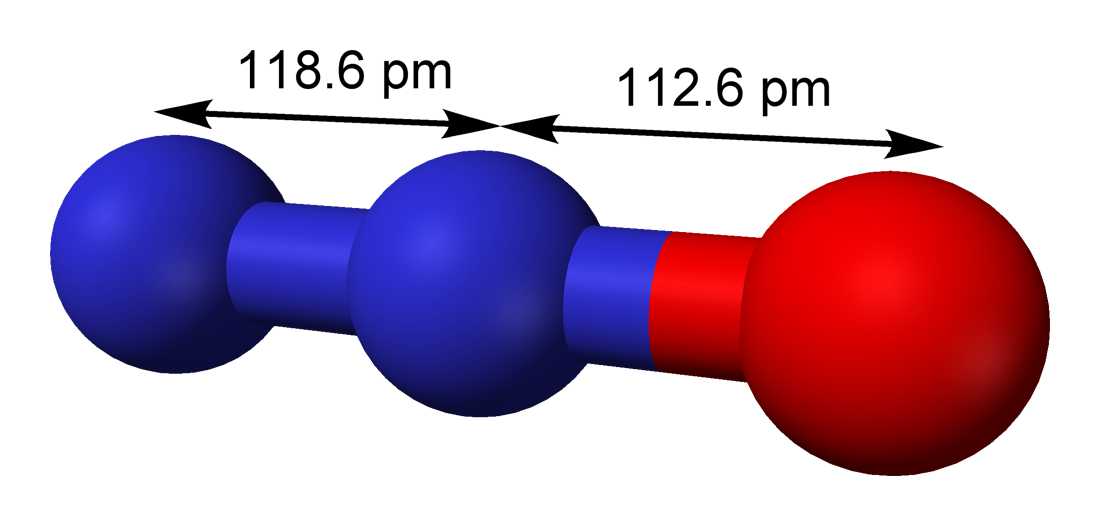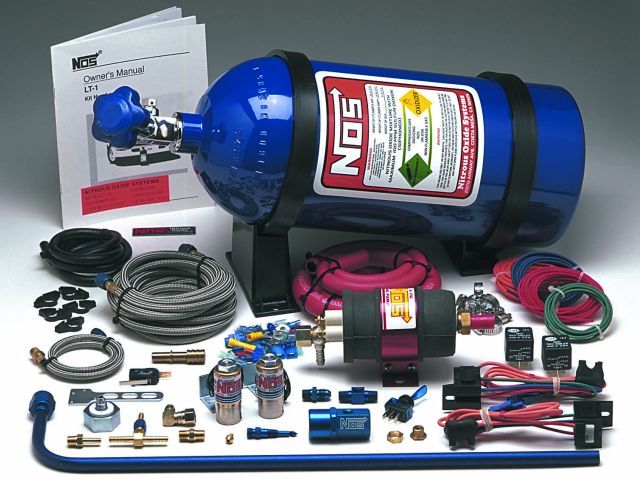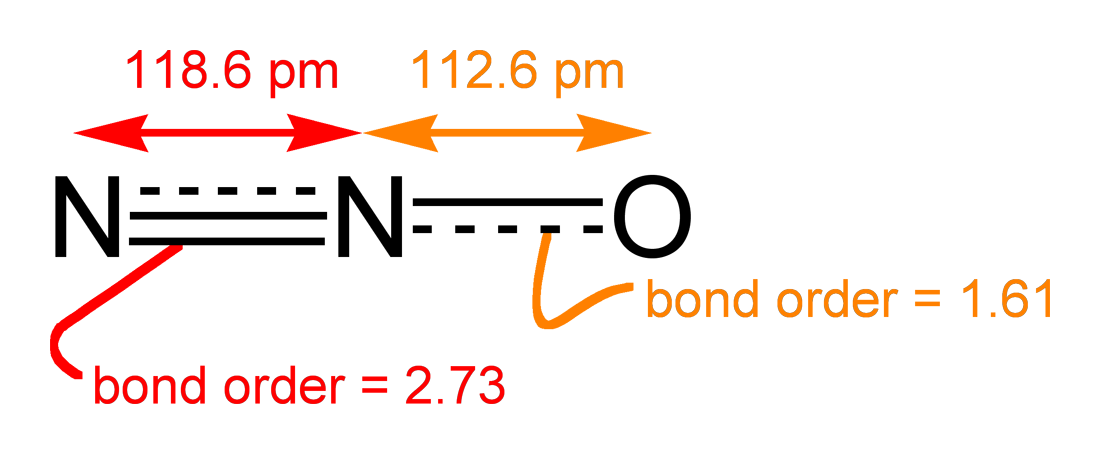| What's Hot! | Products/ Tools | EFI Tuning | Basic Tuning | Advanced Tuning | Chassis Tuning | Advertise with us |
Nitrous Oxide
What it is and how we make Horse Power with it.
Contributed by: Pt Max


What is Nitrous Oxide?
Nitrous Oxide can be referred to as a non flammable cryogenic gas, oxidizer, compound or molecule. Nitrous Oxide is 36% oxygen by weight and is stored as a compressed liquid. Nitrous Oxide is composed of 2 parts nitrogen and 1 part oxygen.

To better understand Nitrous Oxide you should know the definitions of its chemical make up. So I will explain it here:
Cryogenic gases are gases that have been liquefied by lowering temperature, usually to a temperature under about -100°C. Oxidizers are substance’s that release oxygen or other oxidizing material. The release can be accompanied by the production of heat. Compounds are a substance formed by chemical union of two or more elements or ingredients in definite proportion by weight. Molecules are two or more atoms joined together by chemical bonds. Atoms are the basic building blocks of ordinary matter. Atoms can join together to form molecules, which in turn form most of the objects around you.
Grades of Nitrous Oxide
Nitrous Oxide exists in two grades. U.S.P and Nitrous Plus U.S.P is a medical grade nitrous oxide and is not available to the public. Nitrous Plus is nitrous oxide that contains sulphur dioxide and is available to the public. Sulphur dioxide is added to prevent substance abuse.
Both grades of Nitrous are usable in an automobile for performance reasons. However since Nitrous Oxide in its purest form is a medical grade it is against the law to purchase or use for racing purposes. Odds are your local speed shop is filling your bottle with Nitrous Plus.
The Boiling and Combustion of Nitrous Oxide
Nitrous Oxide is stored as a liquid under pressure and turns into a gas once it expands. This expansion is referred to as boiling. Nitrous boils at 129.1* below zero. As the gas enters the air intake it significantly reduces the air intake temperatures. This cooler temperature means the air is denser. This is a great benefit; however it is not the reason for the main increase in power. (Many boosted applications use nitrous just for cooling the air intake and to absorb heat soak.)
The main increase in power comes from the ability to burn more fuel from a controlled combustion process. Let me explain. As the nitrous enters the combustion chamber it will break down separating the nitrogen and oxygen molecules. This happens due to the fact that Nitrous breaks down at temperatures of 565-575*F. The combustion temperatures greatly exceed this temperature. As the bond breaks apart the nitrogen acts as a heat absorbent and the oxygen increases the ability to burn more fuel. It is important to feed the oxygen with the correct amount of fuel needed in order to avoid a lean condition. With the increase in the amount of fuel being burned it will increase the cylinder pressure upon compression stroke. As a result the piston will be returned at a faster rate than normal. (Oxygen + Fuel + Cylinder pressure = HP)
Controlling Detonation

Detonation can lead to engine failure. To avoid detonation controlling the combustion process is very important. This is done by controlling the burn rate through air fuel and timing. Controlling the air fuel is achieved by providing the increase in oxygen with the amount of fuel needed. By providing the correct amount of fuel it will avoid a lean condition that causes heat in the cylinder. Retarding timing to control cylinder pressure is important to avoid pre mature combustion, other wise known as detonation.
Be sure to visit Wet vs. Dry Nitrous set-ups for more information on tuning and running a nitrous set-up.
Also there are complete kits that will have everything you need to set-up nitrous on your car or truck. Check out some of the offers below.
Over View
What you should have learned from this:
1. Nitrous Oxide may be referred to as a cryogenic gas, oxidizer, compound or molecule.
2. Nitrous is not flammable by its self.
3. Nitrous Oxide is 36% oxygen by weight.
4. Nitrous Oxide is composed of 2 parts nitrogen and 1 part oxygen.
5. Nitrous breaks down at temperatures of 565-575*F.
6. Nitrous Oxide is stored as a compressed liquid that becomes a gas once it expands.
7. The expansion from liquid to gas is referred to as the boiling point.
8. Nitrous Boils at 129.1* below zero.
9. Nitrous is available in two grades. U.S.P and Nitrous Plus.
10. Oxygen + Fuel + Cylinder pressure = HP
11. Detonation is controlled by air fuel and peak cylinder pressure.
***Remember*** to check for other relevant information in the columns and article tables.
ATTENTION READER:
If you enjoyed the information and article you just read be sure to check out our newly released book with even more exciting photo's and information:How to Turbocharge and Tune your Engine

Want to know more about your particular Make and Model vehicle? All of these vehicles are covered in the tech, maintenance and repair articles found above. Enginebasics is the wiki or wikipedia of car part, repair, how to and tuning information. Let us be the class 101 for your automotive learning.
| Ford | General Motors GM | Pontiac | Jaguar | Land Rover | Nissan |
| Toyota | Honda | Lexus | Acura | Lotus | Scion |
| Infinity | BMW | Mercedes | Mitsubishi | Ferrari | Maserati |
| Lamborghini | Volks Wagen VW | Saab | Audi | Hyundai | Kia |
| Subaru | Mazda | Chevy | Volvo | Caddilac | Dodge |
| Chrylser | Daewoo | Porsche | Mercury | Freightliner | MG |
Individual Models
| Ford Mustang | Mitsubishi Eclipse | Mitsubishi Evo | Subaru WRX / STI | Dodge Viper | Chevrolet Corvette |
| Nissan Skyline | Honda S2000 | Nissan 350z | Toyota Supra | Chevy Camaro | Lotus Elise Exige |
| Honda Civic | VW Golf | Dodge SRT-4 | Eagle Talon | Acura Integra | BMW M3 |
| Nissan 240sx | Porsche 911 | Acura NSX | Honda Accord | Toyota Camry | Toyota MR2 |
| VW R32 | Dodge Truck | Mazda Rx7 | VW Jetta | Sand Buggy | Nissan Sentra |
For the latest Automotive news and stories visit the websites below |
Our feature Build: An AWD V6 Civic




